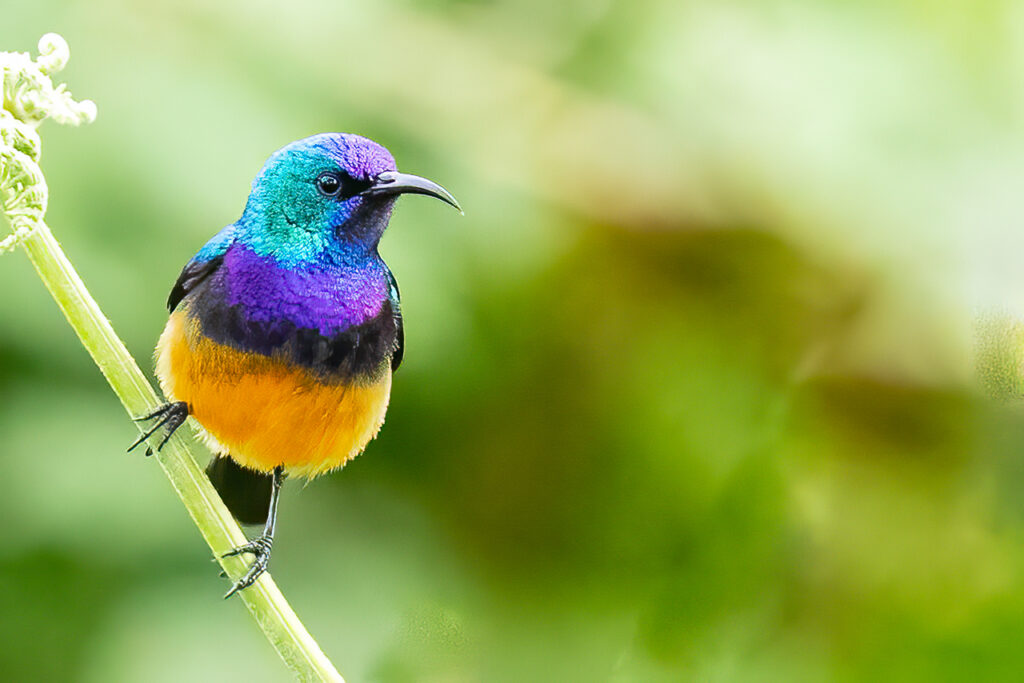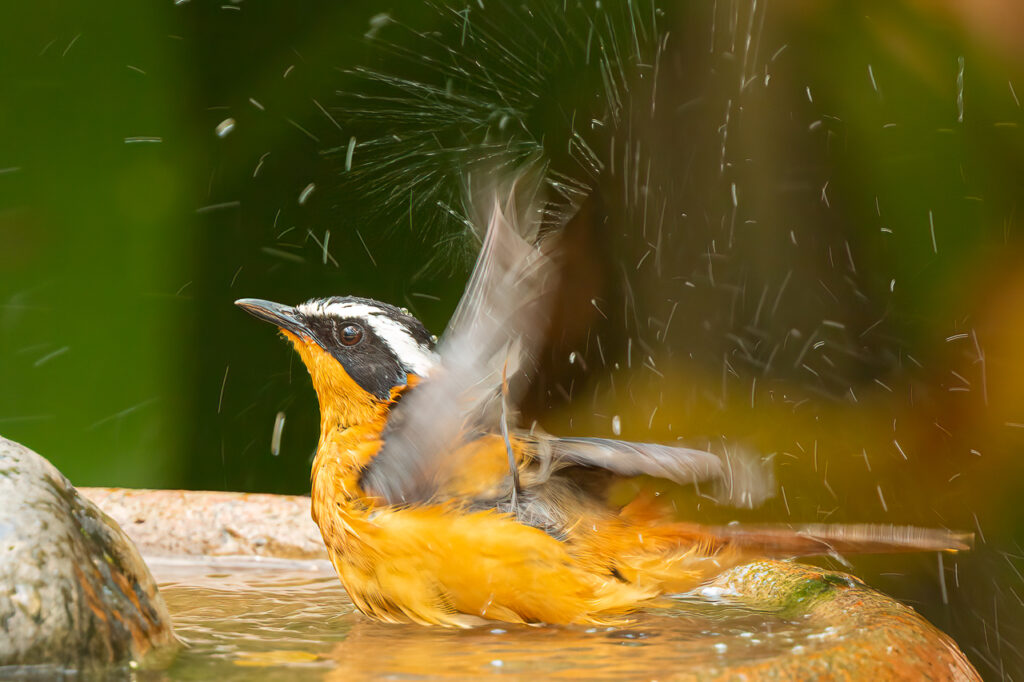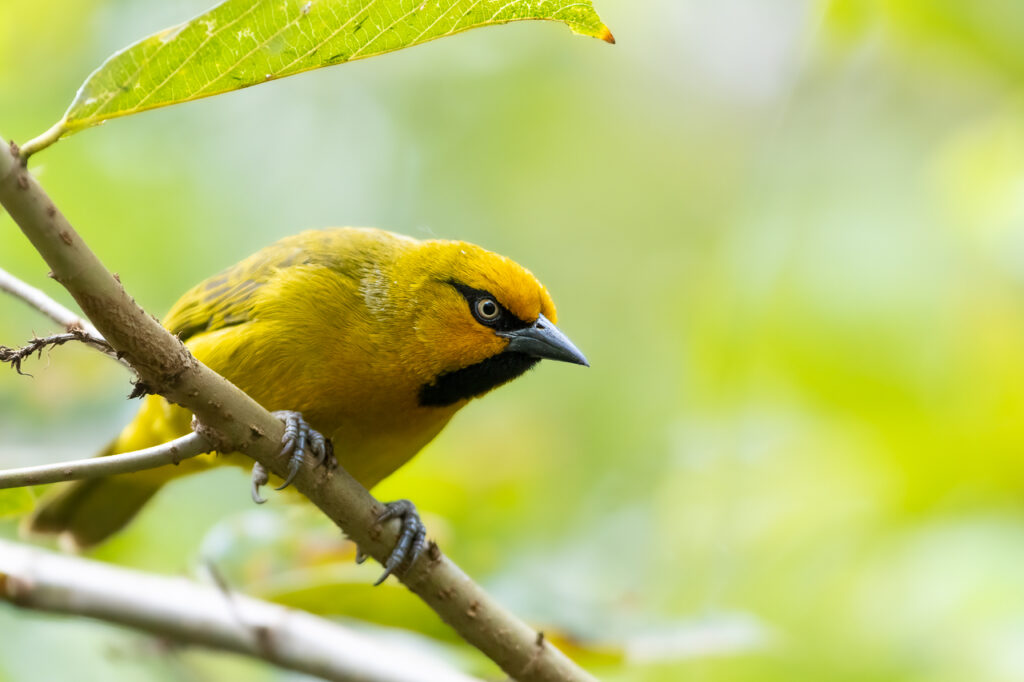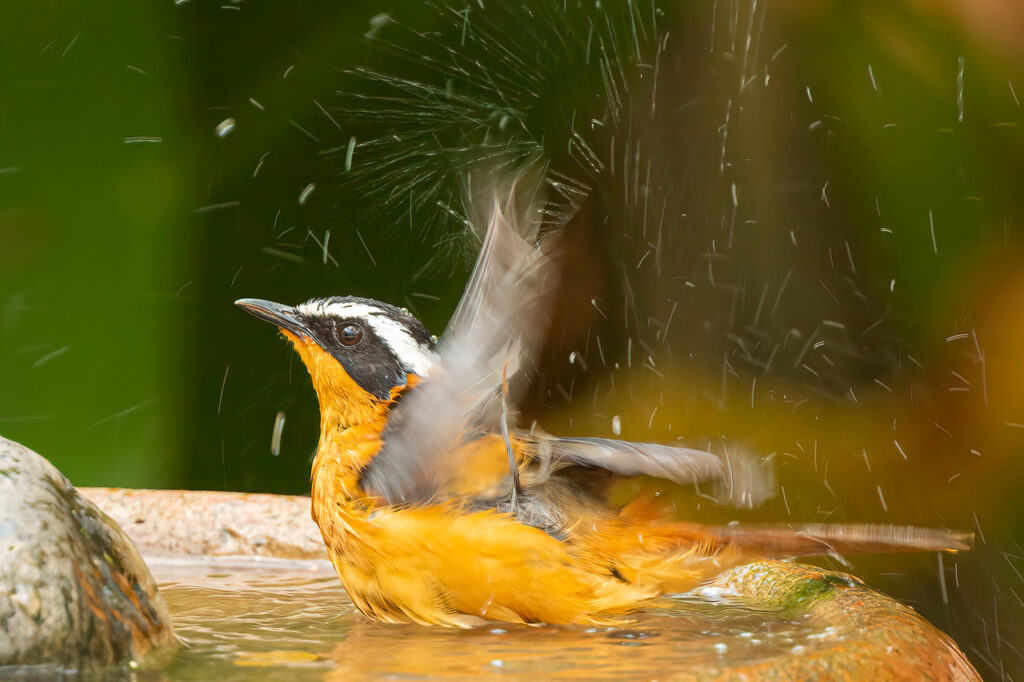Birds are good for us. It is now widely acknowledged that watching birds and listening to birdsong improves our mental well-being and has lasting positive effects on our mental health.
I am often asked by people I meet how can they ‘get into bird watching?’ The first step is to borrow or purchase a pair of binoculars (with a decent magnification and a wide field of view) and source a field guide, specific to your region. For us in Rwanda, the second edition of The Birds of East Africa, by Terry Stevenson and John Fanshawe is great place to start. It has descriptions and illustrations of all the birds found in Kenya, Tanzania, Uganda, Rwanda, and Burundi. Birds in Rwanda, by Gael Vande Weghe and his father is also a great resource for birders in Rwanda. It provides detailed information, photographs, and distribution maps of Rwanda’s birds. Don’t worry too much about the brand, specifications, or quality of your first pair of binoculars – anything that makes it easy to see birds up close without actually getting close will work.
After highlighting the need to respect the birds ‘personal space’ by not getting too close and disturbing them, the first piece of advice I usually give is to start small and be patient. What I mean by this is to initially focus on the birds that either visit your garden (if you have one) or the local area around where you live. Early mornings and late afternoons are prime birdwatching times as this is when birds are usually most active. Patience is key, just wait and watch… Over a short amount of time you will start to familiarise yourself with the key characteristics of the most common birds you repeatedly see, like their size and shape, colour patterns, and their behaviour – familiarity with common species is the first step towards finding and identifying scarcer species. Birds largely communicate through vocalisations so whilst you’re watching the birds also listen to the sounds they make and over time you will be able to link vocalisations to the different species. The first visitors to my garden in Kigali that I recorded were a White-browed Robin-chat, an African Thrush, a Speckled Mousebird, and a Variable Sunbird. Let me know which species regularly visit your garden. Over time you will be surprised how many bird species visit eve a small garden.

If you do have a garden, there are a number of simple things you can do to attract more birds to visit. The first is put out food, this could be seeds or fruit – google can help with what to place out and when to place it. You could also put a shallow bird bath out for birds to bathe in. But if you’re providing food and water then clean feed trays and bird baths daily, otherwise they can become breeding sites for diseases and parasites that can kill birds. Nest boxes can be constructed and attached to trees in your garden or the side of your house – google can help with dimensions and other instructions. A word of warning though – globally, cats kill approximately 2.5 billion birds a year, so make sure whatever you do is out of reach of cats! The safest way to attract birds to your garden is to plant more local flowering plants.

When you pick up a field guide for the first time to try and work out which bird you’ve just seen, it can be quite a daunting task with so many species to look through. The indexes at the back of field guides can be a useful place to start as the family names as are also listed – for example, you may think you’ve been watching a weaver but not sure which, by using the family index you can go straight to the start of the weavers, avoiding a large number of species and narrowing your identification start point. Remembering the general characteristics of the bird you’ve seen you carefully look through the weavers and realise you’ve been watching is a male Spectacled Weaver.

Another important identification tip that people often forget is that common birds are the birds that you are most likely to see and you are unlikely to find something rare or unusual, not because you’re a bad birdwatcher but because rare birds are rare! This means that the bird in front of you that you’re struggling to identify is almost certainly a common species – so knowing which species are common in an area will usually lead you to the correct identification. For instance, although there are 13 species of cisticola in Rwanda there is only one species – Winding Cisticola – that is common in Kigali, another five or so other species of cisticola occur with varying degrees of regularity but almost all of the cisticolas that you see in Kigali will be Winding. Getting familiar with how Winding Cisticola looks and sounds is then the first step towards finding the scarcer species of cisticola.

There are some great apps that can help with bird identification, one such app is called Merlin Bird ID. Once you’ve downloaded the app and the required bird pack of your location to your device you can use their step by step guide to identify a bird or upload a photograph you’ve taken of the bird for the app to identify – I would then check their suggestion against a field guide to be sure. You can also use the app to explore which birds you are likely to see in your area and vocalisations they make, and this can help guide your book-based identification process as well because you have a list of the likely candidates.
Once you have gained some confidence identifying the birds in your garden and local area, the next step might be to venture out and explore local parks and nature reserves and see what different species they have to offer. At this stage you might want to consider joining ebird – another app – which enables you to record your sightings so that you have a permanent record of what you’ve seen, where, and when. Ebird also helps you with bird identification because when you enter bird sightings you do so on a list that is ordered with the most likely species in your area first.
Birdwatching should be a lifelong learning experience – so stay curious and open-minded, appreciate the diversity of species you encounter.


Thank you so much, Will, for sharing this knowledge. Reading about this bathing “White-browed Robin-Chat,” my awesome, favorite, and the best songster I have ever heard, is fantastic! I appreciate the way you have imparted knowledge and confidence to Rwandan young birders. From your outstanding work, numerous wildlife discoveries have been made, particularly in less-featured areas like Nyandungu Ecotourism Park; a formerly degraded wetland, and Nyarutarama, known as the area for Townsmen but previously less recognized in terms of wildlife! Also, many other urban wetlands have benefited from your enthusiasm. Thank you again for your dedication! Much respect!
Thanks Will. The advice for beginning birders is all very good, and it’s as well you don’t encourage photography for beginners as your delightful photos would make most of us give it up in hopelessness..
Thanks Will, I discovered this blog after buying your coffee table book on Birds in Kigali. I don’t have any of the bird spotting books you mentioned but I have just downloaded the Merlin Bird ID app.
You asked what birds come in our garden. Recently we have seen a lot of Babblers in tress and Kites circling in our garden, but will probably spot more species now that I have the app.
For anyone in Kigali, the Nyandungu Eco-Park is a great place for birdwatching!